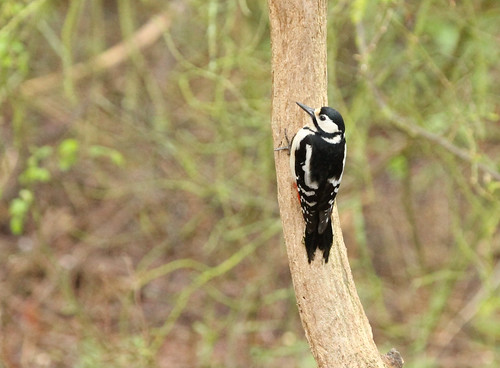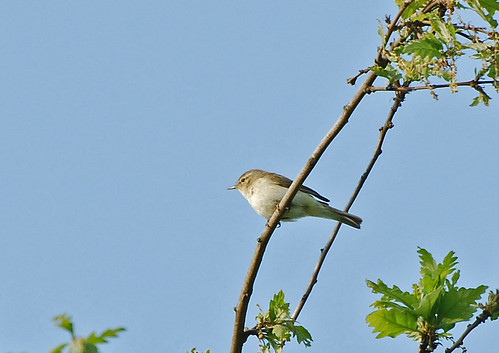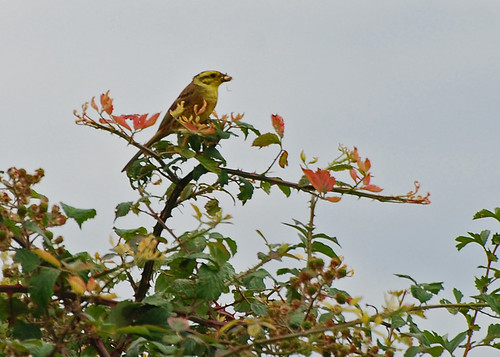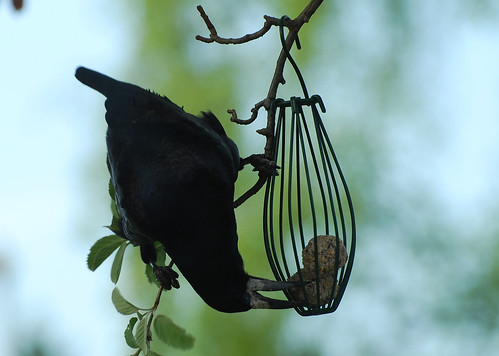In the springtime this year I took a trip to Paxton Pits nature reserve which is a cluster of lakes on the edge of St Neots near Bedford created by gravel extraction. They cover a sizable area and are interspersed with woodland and scrub and incorporates a SSSI (Site of Special Scientific Interest). One of the reasons for going there in springtime is to hear the song of the nightingale for which the Pits are a recognised site.
Early signs weren’t hopeful as the skies were grey and it was cold and raining. So not the best conditions for seeing or hearing songbirds in full voice. And first off, there was very little of anything, and then a great spotted woodpecker put in an appearance low down on a tree trunk.
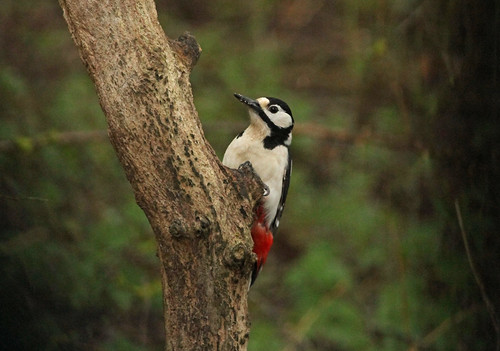 Great spotted woodpecker (Dendrocopos major, Dansk: stor flagspætte)
Great spotted woodpecker (Dendrocopos major, Dansk: stor flagspætte)
This one is a female, the main difference between her and the male is the lack of a red patch on the nape of her neck. I was pleased to get so close to a great spot as they’re normally higher up and not so easy to photograph. They feed on insects which they dig out from crevices in tree bark, but will also take birds eggs and I’ve heard they take chicks too which they can find when they enlarge the holes in bird boxes to get to the nest – which is one of the reasons why the entrance to bird boxes for small birds now have metal surrounds.
The sound of a woodpecker drumming carries for a very long distance, not because of the volume but because the frequency of the drumming has a strike rate of 10-40 per second which causes the tree to resonate.
Shortly after the encounter with the woodpecker the clouds cleared and it turned into a warm sunny day, much more suitable for songbird encounters, and the first one was a whitethroat:
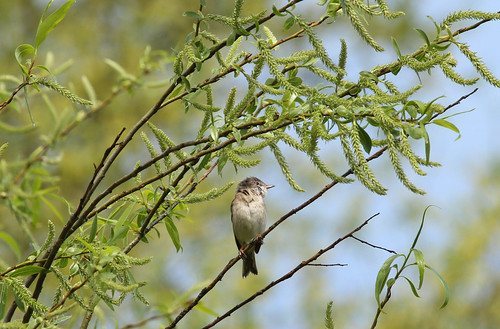 Common whitethroat (Sylvia communis, Dansk: tornsanger)
Common whitethroat (Sylvia communis, Dansk: tornsanger)
The whitethroat is one of our non-resident warblers which were just arriving in the UK from their annual migration back from sub Saharan Africa. When they’re attracting a mate they do a mad little jerky flight heading roughly straight up from the top of a bush and dropping straight back down again, and while they do it they have a distinctive song. But as distinctive as it is, it’s not in the same league as the ultimate songbird:
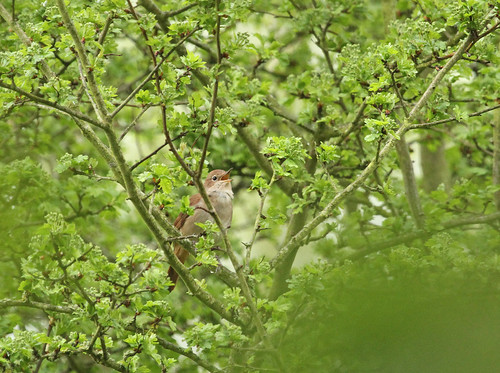 Nightingale (Lucinia megarhynchos, Dansk: sydlig nattergal)
Nightingale (Lucinia megarhynchos, Dansk: sydlig nattergal)
The nightingale is a fairly drab little bird to look at, but the song is incredible. And when it has returned here in the spring after migration, also from tropical Africa it starts to sing… and people will flock from miles around to hear it. Alas, as with many bird species the nightingale is red listed in the UK and in desperate need of protection, consequently this was the first time I managed to photograph one.
There are ponds and shallow pools on the site of the Pits too, and these are being nurtured to encourage dragonflies and amphibians such as this great crested newt:
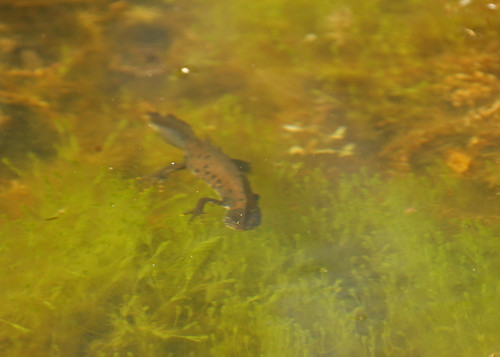 Great crested newt (Triturus cristatus, Dansk: stor vandsalamander)
Great crested newt (Triturus cristatus, Dansk: stor vandsalamander)
Great crested newts are also endangered in the UK due to habitat destruction and are therefore heavily protected. It was good to see an adult male in his full breeding regalia, he’s a spectacular beast.

